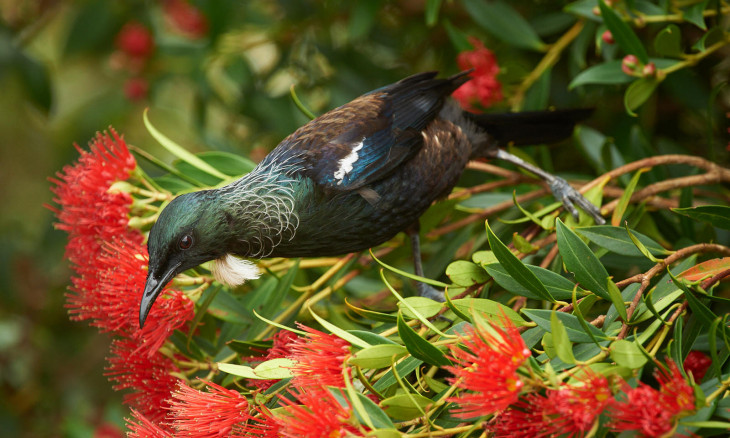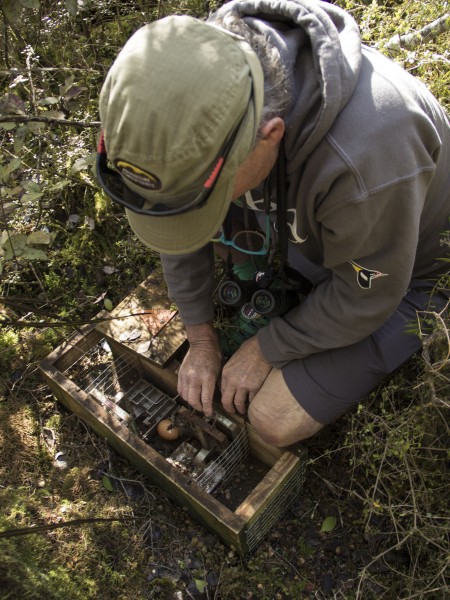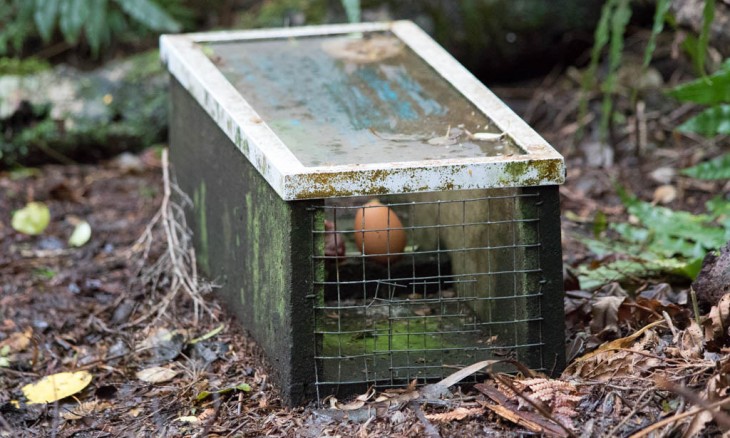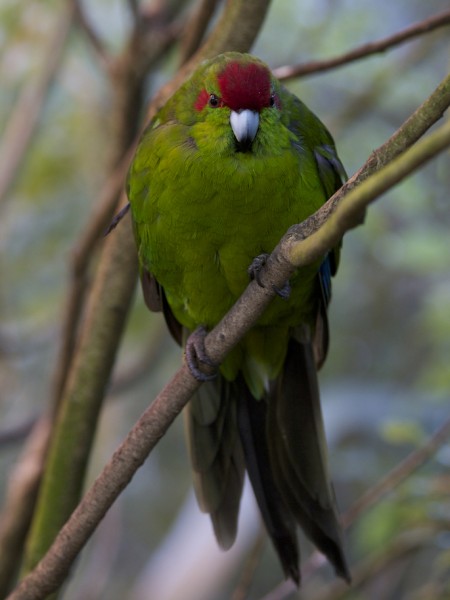In a ‘mast’ year, trees experience extremely heavy flowering, fruiting and seeding. Historically this would trigger an abundance of food for native wildlife to make up for lean years. But now mast events boost rodent numbers, and in turn stoat numbers. When the seed or fruit is gone, the plague of predators turn to our native birds, bats, lizards and insects. Depending on your forest type, the real crunch moment is when the fruit rots or the seed germinates, and suddenly a plethora of rats are very hungry!

Tūī populations are quick to bounce back in areas where large-scale predator control occurs. Credit: Craig McKenzie
This year has been labelled a ‘megamast’ because both beech and podocarp forests are masting at the same time across most of the country. It also follows a heavy fruiting of broadleaf species, which has fuelled a summer abundance of birds, but also of rats.
Forest & Bird staff are working on getting emergency funding for DOC, to allow them to extend their aerial predator control season. We know that timely aerial 1080 operations can control introduced predators and save local populations of wildlife.
But the extent of this year’s masting means that many local projects won’t get any support from DOC’s Battle for our Birds programme. This is bad news, but with good planning and support, your community trapping group can increase its chances of getting through until next summer without being overwhelmed by booming rats and stoat populations.
Top tips for community trappers in a mast year

Forest & Bird member Mark Ayre sets a DOC 200 to protect mohua (yellowheads) in Makarora. Credit: Kimberley Collins Creative Commons
- Time your operations carefully to coincide your increased effort with the likelihood of pests entering your traps or bait stations. For example in a beech forest, once the beech seed germinates; in a podocarp or broadleaf dominated forest you might want to start earlier – when the fruit rots.
- If you trap, add bait stations to your project. If you use bait stations, add traps. Best practise is to change your method every few years, but if you have ‘shy’ animals who are evading your bait stations or traps, this is the year you really want to stop them breeding. Consider also changing the lures you are using in your traps.
- Contact your Regional Council and DOC and ask for more support this year. Whether it is expertise, resources, or boots on the ground, your regional and national authorities are likely to be able to provide some assistance.
- Keep detailed trapping and monitoring records. If you haven’t started regular rat monitoring, consider starting. Rat catch rates are not a reliable indicator of rat numbers in your area. Record what is happening to your traps and bait. Are they being ignored because there’s so much food on the ground, or are they full of hungry rodents? Everything we can learn about these masting events will help us all prepare better for the next one.

A DOC 200 Trap on Pigeon Island in Dusky Sound. Credit: Kimberley Collins Creative Commons
- Advertise for volunteer help. You’re likely to need more traps, and to check them more frequently when the rats start running out of fruit and seed. If so, you’re going to need more people. Have a goal of doubling your volunteer numbers for your crux period. Write posts for Facebook and Neighbourly. Ask the local paper to help. The very best way to get people involved is to ask your friends, family and personal contacts. Ask your volunteer trappers do the same.
- Use the support of any community hubs you might be involved in. Connect up the dots with neighbouring trapping groups. Share the effort.

Red-fronted kākāriki. Credit: Luc Hoogenstein
- Protect your really special native animals. If you’ve got an important population of frogs, lizards, bats, birds, or invertebrates, consider intensifying your efforts around them. Carefully consider the risks of removing traps from elsewhere first though, if this is the trade off. If you know roost or nesting trees, you could consider banding them and the trees that neighbour them.
- Make some noise publicly. Our best advantage is that we are the community experts in conservation. Our voices are important – but we need to speak up. Contact your local newspaper. Tell them about your work, why it’s important, and what’s at risk if DOC isn’t funded to deal with extraordinary mast events. Include Min. Robertson, Min. Sage, Min. Peters and Megan at Forest & Bird in any emails you send to journalists or editors.
- If you need help, ask us. Forest & Bird can provide guidance, support and advice too. Our staff and volunteers have expertise in conservation, trapping, and communications, so drop us a line if you need some pointers, and we’ll do our best to help.
